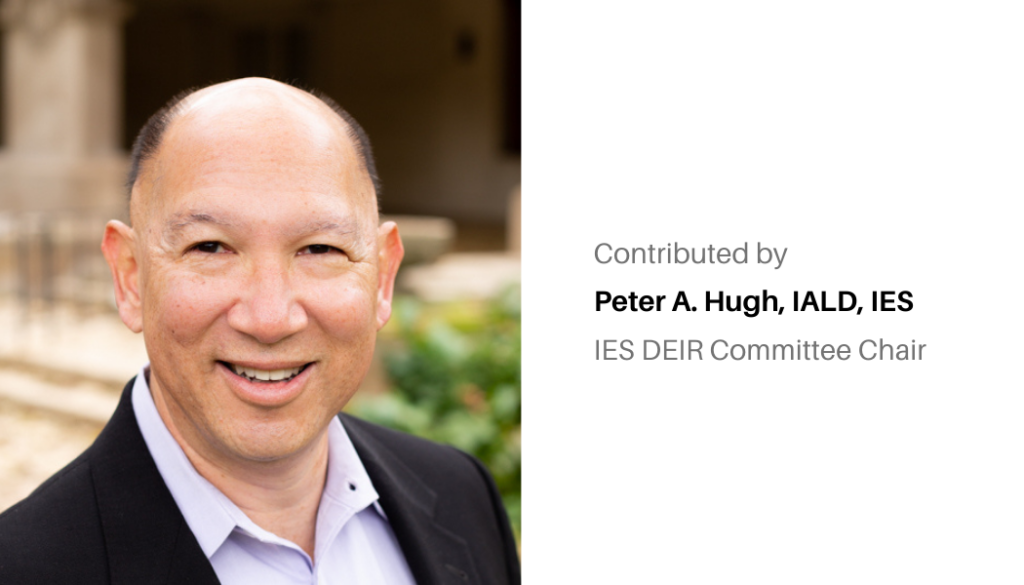This post is part of the Black History Month series.
The IES DEIR Committee
As the chair of the IES Diversity, Equity, Inclusion, and Respect (DEIR) committee, I lead a committee responsible for developing policies of inclusion to be incorporated into the culture of the Illuminating Engineering Society with the greater hope of it impacting the lighting community. Our committee is fairly new, having been established late last year and just beginning to develop our goals and means to said goals. It is important to know that we are not meant to be, nor wish to be the diversity police. There is an ethics committee to address that which Howard Wolfman capably oversees. The DEIR committee is in place to determine policies that will become part of who/what IES is as it relates to matters of inclusion.
Reflecting on the challenges I see for persons of color in the lighting industry
Our industry is a unique one in the makeup of professions that fall under the umbrella of the “lighting industry”. We are lighting designers, electrical engineers, contractors, sales representatives, manufacturers, scientists, and more. Each of these carry their own stigmas regarding diversity and racial acceptance.
I believe the challenges of people of color stem from the opportunities available to them.
In some cases, this is due to outright bias and misperceptions of their abilities. There are also limitations due to socio-economic backgrounds and upbringing that limit access to resources and opportunities. While we can point to solid lighting programs and engineering studies at several universities, these are often not available to those who simply cannot afford them. The colleges that they can afford are often not as prestigious as the known ones, leading to a downplaying of the curriculum and a person’s ability to be taken seriously for hiring consideration. This is quite unfortunate as the industry is a better one when we absorb scholastic knowledge and personal experiences as well as lessons from the cliched “school of hard knocks”.
As a person of ethnic background, I know firsthand the stigmas associated with certain racial backgrounds. What is needed is a process by which everyone is evaluated on their VALUE vs. their expected contribution to a monetary end result.
Evaluating value
In the lighting industry, we often talk of a light fixture or manufacturer’s value to the project. We evaluate the energy consumption, cost, output, etc. We then prescribe these to our projects according to that value finding, room for all manner of fixtures in various projects. We often find that the less costly fixture performs better than a more expensive one and becomes more versatile and valuable in the project. If we only applied that lesson to our personal and personnel evaluations.
I will take the person with a wicked work ethic and life experiences that relate to the everyman whom we do most of our lighting work for. I can teach calculations. I cannot teach empathy, imagination, or vision. These are ideals and skills regardless of color, sex, or nationality that benefit this industry and can take us much further than we are now.
Equal chance is where it starts
This is the end game we should be working toward. This is what the DEIR is working to establish. Equal opportunities and equal respect among our peers. Associations like the IES, IALD, Electrical Association, and others can help all people find their way to these opportunities. Maybe they do not work out. Maybe they become stellar contributors to the company and lighting profession. We will never know if they do not get an equal chance to present themselves and make their case.
We do not just owe these opportunities to them; we owe it because it is the right thing to do and to better our industry.

